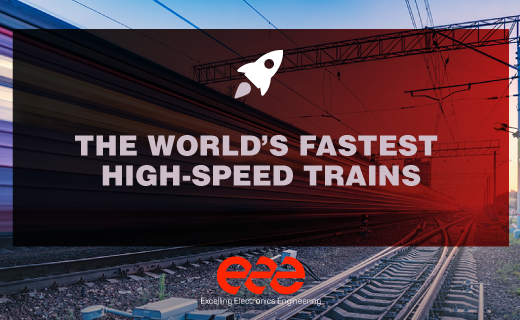High-speed trains are a fast and efficient way to travel, but did you know that some of them can exceed 300 km/h? These incredible technological marvels allow you to travel distances in record time, providing a unique travel experience. In this article, we will explore the world’s fastest high-speed trains. Get ready to discover speed on rails!
Record speed and innovative technology
The Shinkansen L0 Series, an amazing Japanese train, set a world record by reaching a top speed of 603 km/h during tests. Although in commercial operation it runs at slightly slower speeds, it is still one of the fastest trains on the planet. Its aerodynamic design and magnetic levitation technology make it a true marvel of railway engineering.
Magnetic levitation
China’s Shanghai Maglev is the first magnetically levitated train in operation. Reaching a top speed of 431 km/h, it offers a smooth and fast ride between Shanghai Pudong International Airport and the city centre. This futuristic train uses magnetic levitation technology to glide smoothly on the rails, providing an exceptional travel experience.
Efficiency and speed in Europe
We are talking about France’s TGV high-speed trains, renowned for their efficiency and speed. The TGV POS has reached speeds of up to 357 km/h, connecting major French and European cities in record time. Featuring a sleek and comfortable design, it offers a first-class travel experience for passengers who want to travel long distances quickly and efficiently.
Crossing the English Channel at high speed
This is possible thanks to the European Eurostar e320, another high-speed train that deserves to be mentioned. Operating in the Channel Tunnel, it connects London with cities such as Paris and Brussels. Travelling at a top speed of 320 km/h, it offers fast and comfortable travel to and from several European countries. Enjoy the comfort and beauty of the European landscape while traveling at high speed under the sea.
Speed, convenience and connection
Germany’s ICE 3 high-speed train excels in speed and comfort. Capable of speeds of up to 320 km/h, it connects major cities both within and outside Germany. Its modern design and focus on energy efficiency make the ICE 3 a symbol of progress in the railway industry.
In Spain
In recent years, Spain has become a leader in the export of high-speed trains, establishing its presence in the global market. This has generated significant economic benefits for the country. This sector already accounts for 8% of industrial GDP.
This growth has not only resulted in increased revenues, but also in direct jobs in the railway industry, and has boosted other related sectors, such as engineering, manufacturing and logistics. The export of these trains has boosted the image and reputation of the Spanish industry internationally, attracting investment and promoting collaboration in railway infrastructure projects.
Beyond the domestic market, Spanish trains are also exported to countries in Europe, Asia and America. These trains have contributed to the improvement of connectivity and mobility in different regions around the world, promoting tourism, trade and cultural exchange.
High-speed trains are a technological marvel that allow you to enjoy fast travel and a unique experience. They are evidence of progress in the railway industry and invite you to enjoy a thrilling journey at full speed – get ready to hop on board and enjoy the incredible world of speed on rails!










